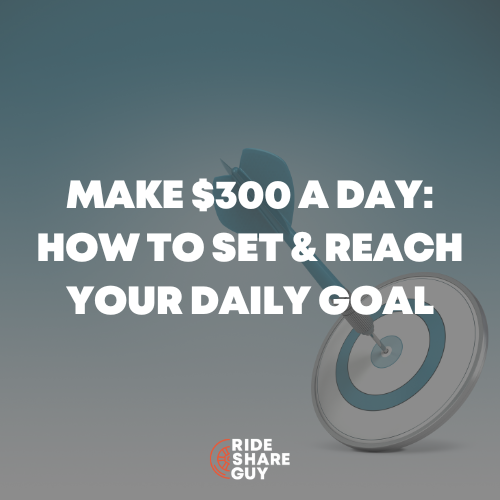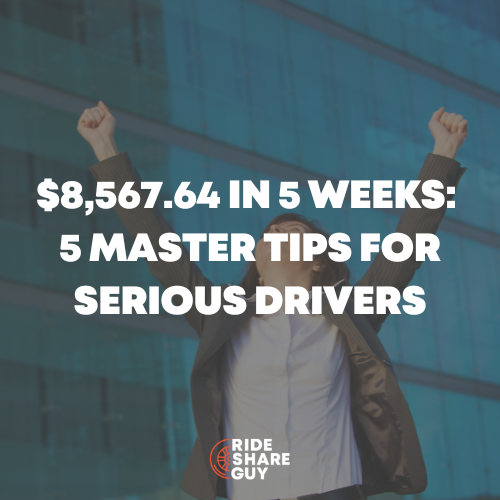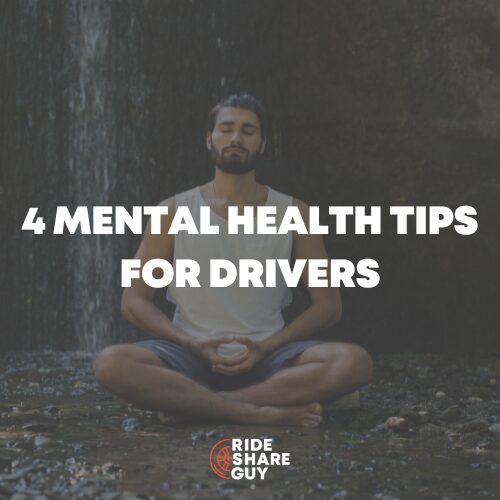Before driving for Lyft, it’s important to understand the Lyft insurance requirements. Don’t assume Lyft provides enough insurance to protect you in an accident because they don’t.
In addition, the situations in which they cover drivers are very limited, so a personal policy is required to drive for Lyft.
Here’s what you must know.
What Are Lyft Insurance Requirements?
All drivers need insurance to be on the road, but the Lyft insurance requirements are more extensive because you’re using your vehicle for business purposes, not just personal.
So understanding the different coverage options and when Lyft insurance does and doesn’t cover you is important.
At the basic level, though, all Lyft drivers need basic personal auto insurance. In addition, most will require a rideshare endorsement or a commercial auto policy when using the car to earn money.
Legal Lyft Insurance Requirements for Eligible Driving
Any driver, Lyft driver or not, must legally have the minimum insurance required to be on the road.
In most states, this means enough liability coverage to cover any person or property you damage when you’re at fault.
However, if you want Lyft comprehensive and collision insurance for times you’re in an accident while driving for Lyft, you must also have personal comprehensive and collision insurance.
Related:
Will Lyft Provide Drivers With Insurance?
Lyft provides drivers with insurance, but not enough to cover them, even when they’re working.
Lyft insurance has many gaps that could leave you in a serious financial bind without personal auto insurance.
Enrolling in Lyft Insurance
All Lyft drivers are eligible for Lyft insurance when they become drivers as long as they have the proper coverage on their personal policy.
In other words, Lyft won’t cover you if you don’t have personal auto insurance, but they won’t let you drive if you can’t prove you have current insurance. They go hand-in-hand.
To be eligible for Lyft insurance, you must have the following:
- Car insurance that meets the state’s minimum liability requirements
- Comprehensive and collision coverage on your personal policy
How Does Lyft Insurance Coverage Work
If you have personal auto insurance, Lyft insurance coverage kicks in only during certain phases. Here’s the breakdown.
1. First Phase
The first phase is when you are not active on the app. If you are in an accident during this time, your personal auto insurance should cover the incident unless you aren’t at fault. However, it’s a good idea to carry uninsured/underinsured motorist coverage should the person responsible for the accident not have enough coverage to protect you.
2. Second Phase
You are in the second phase when you make yourself active on the app but have yet to accept a ride. You have limited Lyft insurance coverage during this phase, and your personal coverage is still helpful.
In this phase, Lyft insurance provides only third-party liability insurance as follows:
- $50,000 per person for bodily injury
- Maximum $100,000 bodily injury per accident
- $25,000 property damage per accident
If you’re injured or your car is damaged in the accident, your personal insurance must cover it. This is why it’s essential to be honest with your insurance carrier about your commercial use of the vehicle. For example, if you don’t carry a rideshare endorsement or commercial policy and your insurance provider finds out you’re a Lyft driver, they could deny the claim.
3. Third Phase
You are in the third phase when you’ve accepted a ride and are en route to pick up the rider or already have the rider in your car. This is when Lyft insurance coverage is the greatest, protecting you and your passengers.
In this phase, Lyft insurance provides the following:
- $1,000,000 for third-party liability
- Coverage for you and your passengers, including uninsured motorist coverage, Personal Injury Protection, and MedPay
- Contingent comprehensive and collision insurance up to your car’s value with a $2,500 deductible as long as you have collision and comprehensive insurance on your personal policy
4. Fourth Phase
After you drop off your rider, you enter one of two phases:
- Back to phase two if you drop off your rider but keep the app active to find another rider
- Back to phase one if you drop off your rider and make yourself unavailable on the app
Getting Your Own Rideshare Insurance Coverage
Even though Lyft offers some coverage, you shouldn’t rely on it.
First, the coverage provided is only helpful if you have an accident while driving to or with a rider. Beyond that, the coverage is limited, and you shouldn’t rely on it.
Because you need insurance to drive even for personal reasons, you should consult with your insurance agent to determine the best coverage, both personally and professionally.
Companies That Partner With Lyft
Lyft partners with insurance companies in some regions to provide its drivers with rideshare insurance at a discount.
These Companies Include:
- Geico
- Mobilatas
- Buckle
- Allstate
- State Farm
- Liberty Mutual
- Progressive
What Lyft Insurance Actually Covers
It’s important to understand what Lyft insurance covers, but it’s not as protective as you think.
1. PIP (Personal Injury Protection) Coverage
PIP or personal injury protection is first-party coverage, meaning it protects you and your passengers if you’re involved in an accident that’s your fault. PIP covers medical expenses and lost wages as a result of the injuries from the accident.
2. Liability Coverage
Liability coverage is third-party coverage, meaning it covers the people or property you damage if you’re at fault for the accident. This coverage kicks in when you’re active on the app (limited coverage) or driving to or with a rider (full coverage).
The liability insurance covers physical injuries other parties have from the accident, resulting in doctor or hospital bills. It also covers damage to repair the property, including other cars, that you damaged in the accident.
3. Collision Insurance
Collision insurance covers your vehicle if you’re at fault for an accident. This is first-party coverage, paying for the repair of damages to your car, not the other cars in the accident.
Contingent Collision
However, collision insurance is contingent upon you carrying collision insurance on your personal policy and is subject to a $2,500 deductible.
This means if you don’t have collision insurance on your personal policy, you won’t have coverage on your Lyft insurance policy. If you have coverage, you must pay the first $2,500 in damages before the Lyft policy kicks in, and it’s only applicable if you’re in an accident while en route or with a rider.
4. Comprehensive
Comprehensive insurance covers damages to your car from anything except a moving accident. So, for example, if you’re waiting for your rider and a tree falls on your vehicle, the comprehensive coverage would cover the damages.
Contingent Comprehensive
Like collision insurance, comprehensive insurance is contingent upon you carrying it on your personal insurance policy and is also subject to a $2,500 deductible.
Again, if you don’t have comprehensive insurance on your personal policy, you won’t have it on your Lyft insurance. If you have coverage, you’re responsible for the first $2,500 in damages before the Lyft policy covers anything. This policy is also only effective if you’re on your way to a rider or have the rider in your car.
5. Primary Liability
Lyft insurance has two liability coverage options, depending on the phase you’re in on the app.
- If you’re active on the app but haven’t accepted a ride, you’ll get minimal liability coverage, $50,000 per person in bodily injury/$100,000 max per accident, and $25,000 property damage
- When you’re on your way to a rider or with a rider, the primary liability kicks in, which is $1,000,000 in third-party liability
6. UM/UIM
Lyft also offers underinsured or uninsured motorist coverage for accidents that aren’t your fault, but the driver doesn’t have proper liability coverage.
This only kicks in when you’re on your way to a rider or with one. Before accepting a rider or after dropping a rider off, this insurance doesn’t apply.
Lyft Insurance Policy Musts
When you drive for Lyft, you should strongly consider the following coverage types.
- Basic Medical Coverage: Basic medical coverage covers your medical costs if you’re injured in an accident and must go to the doctor or hospital. This kicks in if you’re at fault for the accident.
- Personal Injury Protection: PIP, or personal injury protection insurance, is another coverage that helps with medical bills, including hospital stays. However, it also covers other instances, such as loss of wages if you cannot work due to the accident.
- Collision Coverage: Collision coverage covers the cost of damage to your car. Without this coverage, you’d be fully responsible for the cost of repairing your car. Since your car is your office, it could be extremely costly to lose its use of it. Collision insurance lowers the cost to repair it by making you responsible only for the first $2,500. After that, the coverage is up to the car’s value.
Factors Affecting Insurance Costs
Costs vary by provider, and the following factors:
1. Type of Vehicle Covered
Each type of car has different repair costs, risks, and other factors insurance companies consider when determining the premium. For example, cars at high risk of theft or vandalism or cars that cost a lot to repair will cost more to insure than others.
Related:
2. Your Age
Insurance companies use age to determine your risk of an accident. Younger drivers are at a higher risk of being involved in an accident, so they pay higher premiums. Typically, premiums decrease when you are at least 25 years old but increase again around age 55 and older.
3. Gender Specific
Insurance policies don’t judge based on gender; however, typically, male drivers have slightly higher premiums than females.
4. Location of Coverage
The area you live and drive in also affects the cost of insurance. For example, if you live in an area known for high crime, you’ll likely pay more to insure your car. The same is true if you live in an area with a large number of accidents, traffic, or other risk factors.
Coverage Details Lyft Drivers Need to Know
Like any insurance, Lyft insurance isn’t guaranteed; you must qualify for it. Sometimes, it’s not the only coverage you require.
- Eligibility Risks: Not everyone is eligible for Lyft insurance. First, you must have proper personal automobile insurance coverage and a suitable driving history to qualify. For example, you might not be eligible if you have a history of reckless driving, DUIs, or excessive tickets.
- Lyft Insurance Gaps: Lyft insurance doesn’t cover drivers in every situation. In fact, the coverage opportunities are limited and only apply if you’re on your way to a rider or have a rider in your car. That’s why personal coverage with a rideshare endorsement or commercial policy is necessary.
Lyft Insurance Claims
If you’re in an accident, it’s important to know who to contact and how to handle the claim. First, determine if Lyft or your personal insurance is in effect at the time of the accident.
Getting Into an Accident While Driving
If you’re in an accident while traveling to or with a rider, ensure everyone is safe. If there are injuries, immediately call 911. Lyft makes it easy with an emergency button in the app.
Next, you must report your accident to Lyft. The Customer Claims representative will then walk you through the process.
Some of the details you’ll need include the following:
- Date and time of the accident
- Place where the accident occurred
- The name of everyone involved in the accident and the extent of any injuries or damage
You must also provide your personal insurance policy information so Lyft and their insurance partners can determine which insurance is liable for the damages.
Difference Between Lyft and Uber Claims
Lyft and Uber have similar claims and insurance coverage processes.
The key is that you always have personal coverage to protect you from the insurance gaps, as Lyft and Uber only cover drivers when they’re actively driving to or with riders.
Does Your Driving App Affect Your Coverage?
The most significant takeaway is that the amount of Lyft insurance coverage varies based on your status within the app.
- App On: When your app is on, and you accept a ride, Lyft insurance is in full effect. This doesn’t mean you don’t need personal insurance, because you do, especially if you need collision or comprehensive coverage for you or your vehicle.
- App Off: When your app is off, only your personal insurance will cover you if you’re in an accident. Lyft insurance is not effective during this time.
- App in Waiting: If your app is on, but you haven’t accepted a ride yet, you have limited Lyft insurance coverage, but only to protect any third parties hurt or damaged; it doesn’t cover you or your car.
Frequently Asked Questions
Lyft insurance is there for drivers when they’re actively driving for Lyft, but beyond that, you need personal insurance.
Should drivers also get personal insurance coverage?
Lyft drivers are required to have personal insurance coverage, even when Lyft insurance is in effect. So not only is it the law, but it’s in your best financial interest to have proper coverage.
What are the problems drivers face with rideshare insurance?
Rideshare insurance doesn’t cover everything. The maximum coverage is $1 million only when you’ve accepted a ride. Before accepting rides, or after dropping off a rider, rideshare insurance from Lyft doesn’t cover you, and you’ll need your personal insurance policy.
Is ridesharing insurance necessary?
Your personal insurance policy can drop you if they find out you are a rideshare driver and don’t have rideshare insurance. Some companies offer an endorsement to a personal policy, and others require you to purchase commercial insurance policies.
Do You Meet the Lyft Insurance Requirements?
Lyft’s insurance requirements are similar to Uber’s because their partner insurance companies don’t insure drivers in all situations.
Therefore, it’s in your best interest (and the law) to have a personal policy to protect yourself in all situations.





